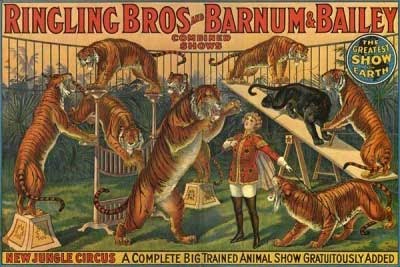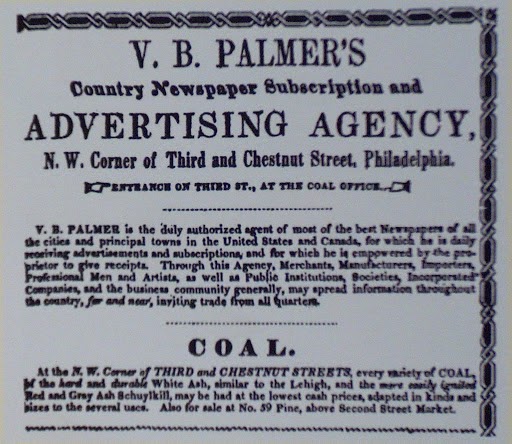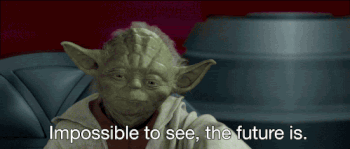From Caves to Cache: The Evolution of Marketing
Marketing comes from the Latin mercatus, which means market-place or merchant.
Marketing has grown and evolved over millennia, often at the behest of changes in the economy, society, religion and government. In fact, humans were advertising wares, goods and services long before there were marketers. Marketing as a professional practice didn’t even turn up until after the corporate world became industrialized.
At its most fundamental level, marketing (from an economic perspective) is the flow of goods from producer to consumer—and that exchange has become more complex over time to involve new roles, processes and technologies.
Marketing... Before There Was a Word for It
One of the oldest forms of marketing is outdoor advertising, and it reaches as far back as 4000 B.C.E, emerging from the trend of rock and cave wall paintings found throughout places like South America, Asia and Africa. There’s evidence of ancient Egyptians using papyrus posters to advertise sales. Displays for commercial messaging have even been found in the ruins of Pompeii.Aside from some of these rudimentary forms of content marketing, oral storytelling was another tool merchants and producers could rely on to reach consumers, like word-of-mouth advertising and recommendations. Using town criers or poets to capture the attention and imagination of others was an early iteration of influencer marketing.
Antiquity
In ancient times, goods were often produced, sold, and advertised by the same merchant, from a central location such as their home. A mosaic found in Pompeii from 25-35 A.C. offered historians a glimpse into ancient marketing in the form of advertising and branding.
same merchant, from a central location such as their home. A mosaic found in Pompeii from 25-35 A.C. offered historians a glimpse into ancient marketing in the form of advertising and branding. The remains of the black-and-white mosaic floor (pictured here) featured amphorae, some of which bore the manufacturers’ mark of a garum (type of fish sauce) producer and merchant from Pompeii, Aulus Umbricius Scaurus1.
Manufacturers' marks continued to be a way for tradesmen and artists to brand their products (eg., metalsmiths, jewelers, winemakers, etc.), but this particular usage of the branded mosaic in Pompeii shows that even as far back as the first century, people knew the value of branded marketing.
The Middle Ages (from the 5th to the late 15th centuries)
Where permitted by monarchs, markets were a common sight in villages, towns and large cities throughout the middle ages. These markets offered local, low-value commodities in addition to the goods sold by shops, which typically doubled as the tradesman’s place of home. These early shops sported large display windows on the bottom that gave passersby a glimpse of what each shop offered.Some of these market towns are still around today, like the Shrewsbury market town in Shropshire, England that was founded in the 16th century, around the same time that the word “marketing” first appeared in dictionaries.
In the 1560’s, the term simply referred to “buying and selling, act of transacting business in a market2,” which makes sense given the subsistence economy of the time.
Most people produced the same or similar goods in small batches; travel between regions was limited; and the goods offered were basic essentials. Due to a number of  factors (division of labor, a lack of surplus goods and competition, underutilized resources), there wasn’t much need to promote one’s goods far from home—or promote them at all.
factors (division of labor, a lack of surplus goods and competition, underutilized resources), there wasn’t much need to promote one’s goods far from home—or promote them at all.
That changed in 1786 when William Taylor founded the first advertising agency in London. This encouraged others to do the same, some of which stayed in business until the late 20th century (like White Bull Holmes and Reynell & Son). Advertising agencies focused primarily on placing ads in publications they owned, which was a step up from filling ad space in newspapers they had no control over. The emphasis on advertising, along with advancements in technology, would pave the way for what was to come.
Caravan travel was introduced to the world in the 1880s, which opened trade to distant regions; and that in turn offered a greater variety of goods that could be produced and sold. Horizons expanded and the world opened up as the industrialization of the 18th century world continued to boom.
The Advent of Marketing as We Know it Today
New opportunities presented themselves as industrialization spread. Firms became “trusts” and trade became mass production. Some producers even managed to corner the market in their respective industries.When marketing next appeared in dictionaries in 1897, the concept included emphasis on advertising and sales, as opposed to the simple ‘flow of goods from producer to consumer.’ 3
One of the biggest transitions to transform marketing occurred when a record number of mergers were initiated between 1895–19204, signaling the start of corporate industrialization and the birth of the Marketer.
Rise of the Marketer (1840s to early 20th century)

The first billboards were created by Jared Bell in the 1830s, but it would take another 30 years for the format to become popular among advertisers. Some of the earliest billboards Bell created promoted circus acts like Barnum & Bailey.
Philadelphia became home to America’s first ad agency in 1841 thanks to Volney Palmer, who over the next 8 years, grew the agency to represent 65% of the 2,000 newspapers in circulation at the time. It wasn’t just the number of clients or ad space Palmer had at his disposal that made him such a pivotal figure in marketing history—it was the systematic approach he took with the advertisements6.
 Outside of providing ad space rates for a given publication, Palmer exercised a well-researched methodology to his work that was previously unheard of. Part of that included organizing the publications he represented according to target market and publication, and occasionally assisting advertisers with ad copy. The innovations he brought to the world of advertising made him one of the best ad agents of his time.
Outside of providing ad space rates for a given publication, Palmer exercised a well-researched methodology to his work that was previously unheard of. Part of that included organizing the publications he represented according to target market and publication, and occasionally assisting advertisers with ad copy. The innovations he brought to the world of advertising made him one of the best ad agents of his time. “The Marketing of Products” was the first course to introduce students to professional marketing and was offered by the University of Pennsylvania in 1904, as part of the Wharton School of Finance and Commerce. Within 5 years, new courses were added such as advertising and salesmanship; and by 1935, a handful of courses turned into the second largest segment of the school’s curriculum and a full-fledged Marketing Department at Wharton.
While the Wharton school developed its marketing curriculum, technological advancements like the radio (1920s) gave marketers and ad men a new channel to advertise from. The radio’s popularity turned it into a must-have for the home, so much so that 60% of homes in America had a radio by 19347.
The Golden Age of Advertising (1950s–1960s)
Brand management was a new aspect of advertising that companies were starting to see the importance of in
 the 1950s. Brand identity became a way to differentiate a company from its competitors and is what would fuel the slick, targeted marketing campaigns flaunted throughout the AMC TV series Mad Men.
the 1950s. Brand identity became a way to differentiate a company from its competitors and is what would fuel the slick, targeted marketing campaigns flaunted throughout the AMC TV series Mad Men. The 60’s really started to embrace the notion of creatives and branding, and ad agencies began popping up around the United States to meet the growing demand for product marketing.
While marketing theory had been in development since the early 20th century, the 1960s saw consensus among marketers (with the help of E. Jerome McCarthy and Phillip Kotler) and the term marketing mix was canonized as the 4 P’s: Product, Price, Place and Promotion.
The culmination of new tactics, technology, brand emphasis and refined marketing practices expanded the opportunities marketers had to not only promote a client’s product, but to create heavily targeted ad campaigns. Advertisements spanned multiple channels, reaching consumers inside and outside of their homes.
The 4 P’s also offered more data-driven marketing through insights like consumer behavior, market segmentation and market research. Emotions ran high in marketing throughout the 1960s as well. This allowed marketers to tap into the psychology of pain and pleasure to stoke desires and pull the heartstrings of their intended target audiences.
Synergy and Relationship Marketing (1970s–1980s)
Synergy Marketing is “the principle in marketing that the whole is greater than the sum of the parts; putting the marketing mix variables together in a way that achieves maximum effect.8”
Synergy marketing emphasizes the importance of “the right place, the right time.” More importantly, it’s when two or more parties can benefit from the same venture, similar to cross-promotion.
McDonald’s of the day practiced synergy marketing whenever they released a new Happy Meal toy based on an upcoming film. Despite the lack of connection between the fast-food giant and the latest film popular among kids, both businesses could benefit.
An animated film gets released or announced, interest surges and McDonald’s gets to attract all of those young fans with toys modeled after the new movie. Happy Meal toys also promoted the film for those who hadn’t seen it, creating that “synergy” between the two.
And then there were the 1980s…
The 80’s is still a total aesthetic; but, what became known as the ‘decade of deals’ among marketers was anything but fashionable. Marketing in the 1980s is often characterized by the greed that raged across America, and the emergence of the American middle class. Still, there’s something to be said about how marketers capitalized on the time.
Up until the 1980s, marketing focused on that one-time transaction. Perhaps it was the constantly shifting economy or rise in rampant mergers and acquisitions that drove many businesses to close, be consumed by another or go private; but marketers began to look at the customer differently. They wanted to build relationships with consumers.
“Customer relationship management (CRM) refers to the principles, practices, and guidelines that an organization follows when interacting with its customers9.”
Thus, the “customer lifecycle” was born. This concept helped marketers track interactions with prospective customers, following their journey from cold prospect to buyer, using data, analytics and research to build a rapport between brand and consumer.
It’s worth noting that guerilla marketing is another product of the 80s.
Rather than focus on building relationships with potential customers, guerilla marketers used originality and shock value tactics to promote something with minimal budget. This style of marketing tapped into the nostalgia of the 50’s and 60’s (or tried to) with its emotionally charged imagery (often fear-based) and attention-grabbing tactics.
Many have challenged the ethics of guerilla marketing since its conception, but like the 4 P’s, it too changed over time to accommodate shifts in consumer behavior and new marketing ideologies.
Era of Digital Marketing (1990s)
Unfortunately for the world, one of those strategies gave us spam—a digital analog to the printed flyer that only muddied the novelty of e-mail, and marketing in general. Fortunately, other marketers had the savvy to treat search engines like customers. They appealed to the factors Google and Yahoo! used to rank their search results ala search engine optimization.
SEO was the real game changer of 1990’s digital marketing. It introduced a new, technical discipline marketers could use to get their products or services to rank higher in search, making them more likely to be found by prospects. Search engines eventually adapted to these new marketing efforts and forced marketers to follow suit, or risk sinking to the bottom of the Internet’s deepening well of websites.
Meanwhile, the 4 P’s were being adapted to be more customer driven, turning them into the 4 C’s.
The most common iteration of the 4 C’s is owed to Bob Lauterborn. He felt the 4 P’s were no longer relevant and promoted “the Consumer’s wants and needs; the Cost to satisfy; Convenience to buy and Communication.10”
The 90’s still feel like America’s awkward haircut phase, but at least it gave us the Internet.
Right?
The Great Social Experiment (2000s - 2010s)
When Mark Zuckerberg created ‘the Facebook’ in 2004, it was meant to be a social network that kept college students connected.The wildfire success of Facebook in just its first two years alone made it a platform that could keep everyone connected; but as caravans did for the expansion of trade, social media opened the world to marketers and companies who wanted to spread the gospel of their goods and services in a brand new way.
Social media delivered on its promises to expand the way people could communicate with each other just as the Internet had. As marketers would soon learn, being able to reach customers through public platforms like Facebook meant the customers could talk back—or filter them out.
The Customer is Always Right
It took plenty of trial and error for marketers to realize that the best marketing strategies catered to the customer’s needs and wants. The psychology of emotions has long since played a part in marketing over the years. It simply took some time for marketers to go from inspiring emotions in prospects, to empathizing with them.
Making someone feel something isn’t hard to do, but establishing that connection through common understanding builds the trust and relationship between brand and customer that’s become a core concept of contemporary marketing today.
Final Thoughts
Marketing practices shift whenever there’s a new opportunity to connect with potential customers, or when communication technology advances. When we have as many connectivity tools as we currently do, where else could marketing go? Today’s marketing best practices are customer centric; but could that change one day?
It’s inevitable that all things change in time—it’s how we adapt to those new opportunities that can mean the difference between repeating old patterns and affecting positive change.
Contemporary marketers still get use out of some of the older practices, like funnel marketing and guerilla marketing; but neither resembles what they once did. The sales-focused funnel now looks more like a customer-driven flywheel; and guerilla marketing went viral when marketers realized that low-budget, in-your-face tactics didn’t have to rely on shock and distraction.
Since 2011, marketers have toyed with a number of new technologies as the possible next big thing, such as voice search and virtual reality. Many can appreciate the novelty of VR or having a virtual assistant. Are they game changers, though? SpaceX continues to bring us closer to commercial spaceflight—should we expect future marketers to capitalize on the vast real estate of outer space or treat shuttles like ad space on the sides of buses?

We may not know what marketing will become or where it will ultimately take us. Wild speculation aside, the history of marketing is still being written. Methods are still being innovated and refined. There’s never been a one-size-fits all marketing strategy and perhaps that’s why it’s so hard to surmise where it could end up one day—or to know how the relationship between producer and consumer might change over time.
Maybe we already have the ‘next, best thing’ and we don’t even realize it. There’s only one way to find out: get in touch with Citro, and let’s talk about your marketing’s future.
